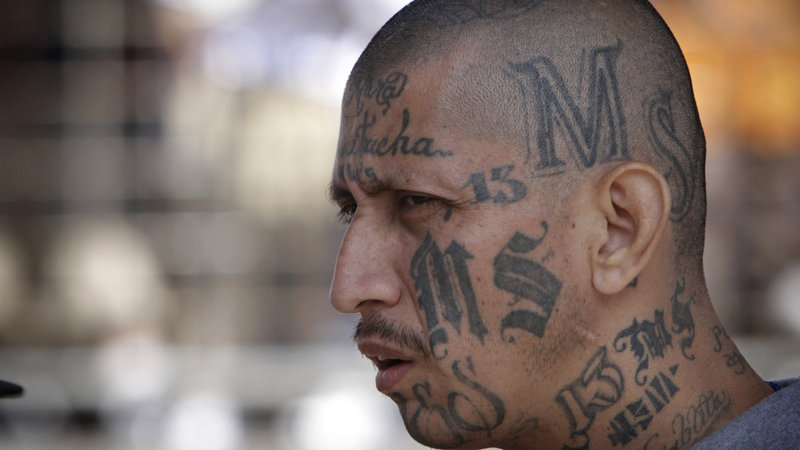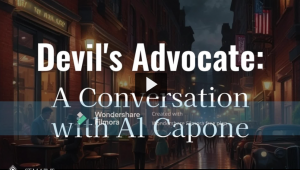Los Angeles is well-known for its major attractions such as Disneyland, Sea World, Universal Studios, and its many other attractions. Los Angeles is one of the most popular cities in the world. Of course, when people think of the city, they think of a very lavish lifestyle full of celebrities and famous Hollywood movies, but little do people know that there exists a whole different world in the southern part of the city. South-Central Los Angeles is known for its crime and gangs. The Bloods, which was a very big gang in Los Angeles, had already been formed and they were committing crimes throughout their neighborhoods in southern Los Angeles, much like their rival gang, the Crips. There was another gang known as the Barrio 18 (18th Street Gang), which was the largest gang not only in Los Angeles, but also in the country in the 1970s and 1980s. Though Los Angeles was the second largest Mexican population city in the world, it was also made up of numerous immigrant groups from Latin America beyond Mexico, and because of that, it was also the birthplace of the most dangerous and largest street gang in the world.
During the 1980s, the Central-American country of El Salvador was experiencing a very serious war between the government and its people. The army, loyal to the government, tried to recruit many young men to join with them, but many refused. With the war becoming more intense by the day, many people who were revolting against the government were being attacked. Since the government at the time was under a dictatorship, many of the young men were forced to join the government army. The recruiters would show up randomly at the schools. It did not matter if they were from high school, middle school, or elementary school, the government wanted young soldiers on their side. The recruiters took the young boys without giving warning to their families, and immediately trained them for war. Sometimes, when the army knew that some of these boys were against the government, they would simply kill them on the spot. Therefore, in fear of being drafted in this way, hundreds of thousands of Salvadorans fled to the United States.1 Most of the families who arrived in the United States had no idea where to go, because they did not have family members in the United States at that time. The immigrants spread throughout the southern United States, but the majority of the immigrants settled in various neighborhoods of Los Angeles. Within the city of Los Angeles, there were many longstanding gangs, such as Barrio 18, which mostly consisted of Mexican Americans, and there were also Asian gangs and African-American gangs. There was one particular neighborhood known as Pico Union, and it would become the birth place of one of the most notorious gangs of all time, based on the immigration of Salvadoran youths fleeing the violence of their homeland: MS-13.

The Pico Union neighborhood was originally home to a gang called the Barrio 18, or simply Street Gang 18. Before MS-13 came along, Barrio 18 was known as the most dangerous gang in America. At the time, Barrio 18 had a large number of members all over the United Sates, and some members resided in parts of Mexico or in Central America. Barrio 18 had become the most powerful gang in Los Angeles because of its violent acts and illegal business. Unlike MS-13, Barrio 18 was very well organized.2 Like any other gang, they were known for violence, illegal trading of narcotics, and prostitution, but they were constantly growing, especially since there were so many different groups of Latinos living in Los Angeles. But, all of that changed when the Salvadorans came into the picture.
Mexicans often harbor racist attitudes towards Salvadorans, and it was no surprise when tensions started rising between the two groups in the Pico Union district. There were many times when the two groups would start fights and would get in trouble with the authorities, which result in deportations, since many of the members were undocumented. Though most fights were physical, some of them resulted in many people getting seriously injured and sometimes killed. It was very common for many gangs to bring weapons with them for a fight, but since the Salvadorans were still ignorant to the ways of a gang, they were always unprotected.3
As time went by and the two gangs started to get into more conflicts, the need to fight back grew stronger among the Salvadorans. It is believed that the way MS-13 started came from a soccer match on the playground of Seoul International Park in the Pico-Union neighborhood of Los Angeles.4 Soccer is a very popular sport among Hispanics; therefore, it was not surprising to see the two groups play against each other. The Salvadorans and Mexicans were playing against each other when all of a sudden, a fight broke out that resulted in the Salvadorans being outnumbered once again. After that night, a group of young Salvadorans decided to get together and form what is now known as MS-13. The group swore to always protect their “barrio” or “hood.” From then on, MS-13 would expand to have around 700,000 members in many parts of the world.5

The gang started evolving and was soon starting to catch on to the gang lifestyle. Instead of guns, gang members would often carry a machete with them wherever they went. The machete was not only for protection, but it was also a way for the members to kill someone. The machete was also a common weapon for many Salvadorans to carry around with them back in El Salvador. One member of MS-13 would recall, “guarding the family’s crops at the age of 4, armed with a machete, alone at night.”6 Many times, their victims would suffer several cuts around their body or, in severe cases, some of their body parts would be completely cut off. As one officer recalled, he found a body, “on the banks of the Shenandoah River, repeatedly stabbed and her head nearly severed.”7
MS-13 consisted of many undocumented Salvadoran immigrants, but when the members started to get deported, they would go back to their country and spread the awareness of the newfound gang. Another distinct characteristic that the gang has is that the members of the gang usually have tattoos that use “the emblem MS-13” across their forehead, torso, or their back.8 Another common tattoo would be the devil’s hand with the MS-13 emblem. It was very easy to spot who the members of the gang were, let alone their mass number of members. The members of MS-13 would wear white shirts, maybe a flannel over it, large shorts that would often sag, and Cortez’s along with white socks. The gang adapted into a “cholo” like attire all while expanding their connections and creating a massive empire all throughout the 1980s. MS-13 grew more and they started having outposts all over El Salvador, Honduras, Nicaragua, and sometimes they would even recruit Mexicans. But, as the power and population increased, so did the tensions between them and Barrio 18.

As mentioned before, the Barrio 18 was mostly Mexican American, and Mexicans at that time were racist towards the Salvadorans. But, when MS-13 started growing and getting more dangerous, Barrio 18 could not help but notice what an empire the MS-13 had built. With both MS-13 controlling Pico-Union’s flourishing drug trafficking market, violence rose to a new level.9 A big reason why MS-13 became so famous was because of their distinct rivalry with Barrio 18. Since both groups had many members spread throughout the United States and many countries throughout Central America, they made many places very dangerous. For example, the city of San Pedro Sula in Honduras became one of the most dangerous countries in the world due to the gang violence between MS-13 and Barrio 18. Both gangs, “fight each other for control of territory so that they can expand their extortion rackets, trade in drugs and engage in other forms of organized crime. But gang members also murder their rivals simply to raise their status within their own gang, which helps perpetuate the conflict.”10
The way MS-13 operates is quite unique and is another aspect of what makes them unique. As one former member would say, “First is God, then your mother, then your gang. You live for God, you live for your mother, you die for your gang.”11 The gang seemed to be very family oriented, so they would recruit new members just as long as the new recruits would promise to stay loyal to them no matter what. If someone were to be discovered going behind the gang’s back or having relations with other gangs, then they would be killed without hesitation. For example, one member had turned to the government. Therefore, three MS-13 members—close friends of Paz— were “tapped” by the gang’s leadership to carry out her murder.12 MS-13 was very big on loyalty and being like a family, so there was no dictatorship that would keep the gang together, which also made them very difficult to take down by the authorities because they could not identify who the leader was. As many people would say, “It’s considered the fastest-growing, most violent and least understood of the nation’s street gangs.”13
Today, MS-13 has created a very large empire, spreading not only across the United States, but also throughout the world. The FBI has named MS-13 as the most dangerous gang and though there have been many efforts to stop their expansion, the gang seems to be almost impossible to stop.
- Kelly Padgett Lineberger, “Vanderbilt Journal of Transnational Law Note The United States – El Salvador Extradition Treaty: A Dated Obstacle in the Transnational War against Mara Salvatrucha (MS-13), ”Vanderbilt Journal of Transnational Law 44, no.1 (2011): 190-191. ↵
- Ana Arana, “How the Street Gangs Took Central America,” Foreign Affairs 84, no. 3 (2005): 102. Accessed February 28, 2020. doi:10.2307/20034353. ↵
- Arian Campo-Flores et al., “The Most Dangerous Gang in America,” Newsweek, 2005, 145 (13): 22–25. http://search.ebscohost.com/login.aspx?direct=true&db=a9h&AN=16479562&site=eds-live&scope=site. ↵
- Kelly Padgett Lineberger, “Vanderbilt Journal of Transnational Law Note The United States – El Salvador Extradition Treaty: A Dated Obstacle in the Transnational War against Mara Salvatrucha (MS-13).”Vanderbilt Journal of Transnational Law 44, no.1 (2011): 190-191. ↵
- Arian Campo-Flores et al., “The Most Dangerous Gang in America,” Newsweek, 2005, 145 (13): 22–25. http://search.ebscohost.com/login.aspx?direct=true&db=a9h&AN=16479562&site=eds-live&scope=site. ↵
- Arian Campo-Flores et al., “The Most Dangerous Gang in America,” Newsweek, 2005, 145 (13): 22–25. ↵
- Arian Campo-Flores et al., “The Most Dangerous Gang in America,” Newsweek, 2005, 145 (13): 22–25. ↵
- Charles Legge, “Tattoo That’s Sign of Terror,” Daily Mail, January 26, 2018. ↵
- Kelly Padgett Lineberger, “Vanderbilt Journal of Transnational Law Note The United States – El Salvador Extradition Treaty: A Dated Obstacle in the Transnational War against Mara Salvatrucha (MS-13),” Vanderbilt Journal of Transnational Law 44, no.1 (2011): 190-191. ↵
- Ioan Grillo, “The Kill Zone,” TIME Magazine, 2015, 186 (5): 42. ↵
- Kelly Padgett Lineberger, “Vanderbilt Journal of Transnational Law Note The United States – El Salvador Extradition Treaty: A Dated Obstacle in the Transnational War against Mara Salvatrucha (MS-13),” Vanderbilt Journal of Transnational Law 44, no.1 (2011): 190-191. ↵
- Kelly Padgett Lineberger, “Vanderbilt Journal of Transnational Law Note The United States – El Salvador Extradition Treaty: A Dated Obstacle in the Transnational War against Mara Salvatrucha (MS-13),” Vanderbilt Journal of Transnational Law 44, no.1 (2011): 190-191. ↵
- Arian Campo-Flores, et al., “The Most Dangerous Gang in America,” Newsweek, 2005, 145 (13): 22–25. ↵



75 comments
Joshua S Marroquin
This was a very interesting article about gangs and drug cartels, I was amazed how many new things I learned about this topic, which at first didn’t seem that interesting but it surpassed my expectations. I didn’t understand how complex an organization can get; it is crazy to learn that some gangs can get so big that they can even run a city. Knowing this, I know understand why police officers can’t do much when two big gangs go against each other,
Shecid Sanchez
I just want to say congratulations on writing this amazing piece! I never heard about MS-13 before. Reading about how this gang was created and what lead up to all this violence is crazy. The fact that Mexican Americans were messing with the Salvadorians just because of where they’re from led to one of the most massive gangs.
Eliza Merrion
This article was a very good read. I have heard of gangs like the “bloods” and “crips,” but I have actually never heard of MS-13 before. Reading about the gang and their story was extremely fascinating. It was also shocking to hear about all the crime that ran through California, it was a lot more than I ever anticipated. The images you choose also really helped to support the main idea of your article. It was interesting to see all the gang members that were “in custody.”
Claire Saldana
I find the gangs and drug cartels very interesting. I think many people don’t see how smart these gangs are. I love to watch Narcos for this reason. Of course their actions are not something I commend. I do think the way they are able to build their organizations, make money, battle against other gangs and governments is very tactical and strategic. This is why it will almost impossible to end the war on drugs. These men have too much of a connection to each other and their homelands. I also wanted to point out another uncommon idea of racism from Hispanics to other Hispanics. Mexicans don’t stand in solidarity with the Salvadorans even though they probably share a lot of similar tragedy and oppression.
Daniel Gimena
Good to read about an important topic (unfortunately) that we often tend to “oversee” and act like it doesn’t exist.
It is good to know about the MS-13, the classic type of gang that works in the USA but controls a big part of central and south America, where life many times means not too much.
It is incredible how these type of organizations grow at such an amazing speed. Organizations which power and influence get far beyond drug or weapon market.
Although it might be better to not think constantly about these gangs and how close they live to us, it is really important to know that they are there and that it is we humans who have created them.
Elliot Avigael
MS-13 is a terrifying gang. Their barbarous attitude and methods of murder is almost something we would expect to see out of the Dark Ages, yet it is happening across both North and Latin America in real time.
I was aware of MS-13’s existence prior to reading but I never understood the history behind their origins. Their story is definitely a tragic one.
Edward Cerna
This is such an amazing article because it covers such a large and dangerous gang. Although I had known of the MS-13 gang, I had not known that it started over a soccer game. I find it kind of interesting that something that is supposed to bring people together such as sports created such a dangerous gang. This article gave great insight on the MS-13 gang and the author did a great job on the flow of the article because it kept me engaged until the very end.
Vivian Urrutia
The origins of the MS-13 gang are a perfect and clear example of what an excessive passion can create, in this case, a soccer match led to a chain of crimes and violence. In my country, Honduras, this gang is very well known and has the most members over the gang after El Salvador. These gangs are filled With young children and kids trying to find a family and/or some kind of special bond with someone. the gangs want to offer you protection for every member all the gang warning you to believe that they have your back. It is unfortunate the factors that have raised the violence of the MS-13 because most of it is society itself.
Juan Asfura
I live in Honduras and El Salvador is right next door, and MS-13 is also very well known across Honduras after being one of the two biggest and most dangerous gangs in Honduras alongside the Mara 18 or Barrio 18. These two gangs are the ones which run most of the crimes around the country and also are in control of most of the neighborhoods and “Barrios” around the country. It is interesting how this gang migrated all the way from Central America to Los Angeles. This was a really interesting topic and especially the title caught my attention really fast.
Martha Z Lopez
Hi this article has opened up my eyes and has left me speechless. I am a Mexican American “Chicana” and fell in love with an illegal from El Salvador here in the United States. After all the articles Ive seen on gangs and their economic welfare I am now more confused about where our relationship may lead. He’s very affectionate, patient and has a great personality he’s also spiritual which keeps me hopeful. I don’t know what to do. I was posting our flags together and now that I have read up on his country I realize that may not be a very good idea due to immature racist people.
Mohammed Hani Shaik
Amazing article with very well detailed research! I find it unfortunate that violence against them has caused them to turn to violence instead of peace. They resorted to fire as means to fight fire and this only turns out to become a cycle. It is only a matter of time before another minority gets violated and feels the need for revenge and will be the reason for the creation of another gang.